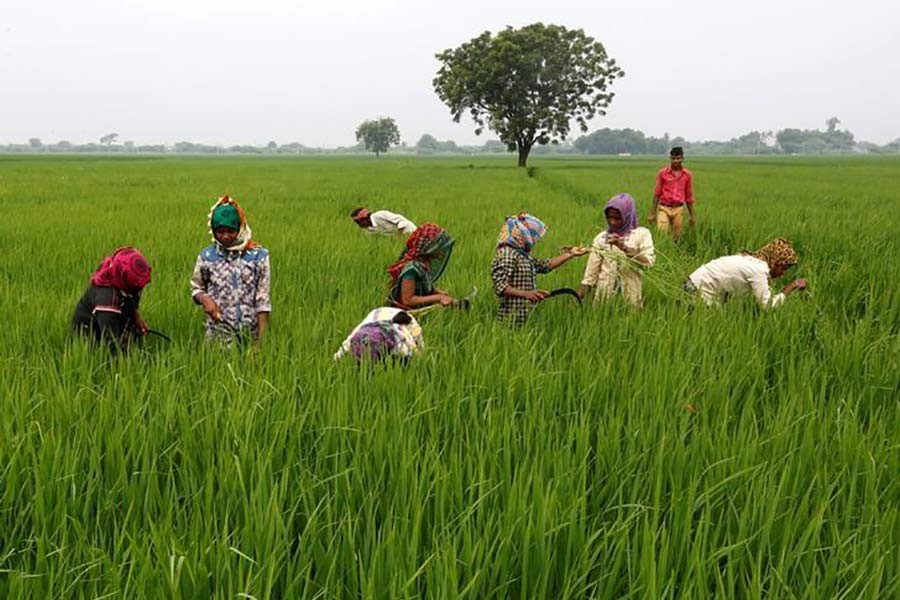Over the last decade Indian agriculture has become more robust with record production of food grains and oilseeds. Increased procurement, consequently, has added huge stocks of food grains in the granaries. India is one of the world's top producers of rice, wheat, milk, fruits, and vegetables. However, given that India is still home to a quarter of all undernourished people in the world and since on an average almost half of the total expenditure of about half of the households is on food, increasing the efficiency of the farm-to-fork value chain is crucial for eliminating poverty and malnutrition.
Most of the plans here lack realistic touch in as much as sectoral target fixing, regional peculiarities and related other sociological factors are considered. More often than not, politics pushes back the economic positives. Not only is this the reality in India but in the entire developing world as well. Either the projects are not taken up or even when the same is taken up the rate of progress remains at a low level - resulting in cost escalation. What is more, projects completed are not subsequently followed up, supervised adequately. As a result, the same job is to be repeated within a short span of time involving more expenses.
How many countries are there in the world that produce grapes twice in a year! The quality of many horticultural crops enables India to remain largely unbeatable in the global market. In spite of competition becoming intense, we are able to retain the markets for many agro commodities. The flip side - we have to remain content with less than 1 per cent share in global trade in agro commodities!
So the question of complacency is not at all there, rather time is ripe for looking at the inhibiting factors. It is very difficult to understand why pulses (main protein source for the vegetarians) output hovers around 13-18 million tonnes since 1960's! It is still considered as a second grade product, though there is no doubt that a number of programmes have been taken by the government to boost production. Poor implementation continues to hit hard.
The point here is that had we been one of the grain bowls, by now we could have reaped large benefits from the rising international prices of the agro products. The most important factor in this regard is that demand for such products - especially food grains -- would never come down, rather it is all set to go up over time. Population upsurge coupled with growing demand from industrial sectors could keep the demand factor at a reasonably high level.
Food security is such an area where no compromise can be made. Either one becomes self-sufficient in vital areas or suffers! That is why an urgent need is there to go for overall farm development efforts. For that matter, needless to say, role of infrastructure holds the key. The loss incurred during the entire production process including the damage done in the unscientific threshing, rat menace, field loss etc., can be minimised. Without proper training imparted to the farmers as regards post-harvest technology, not much can be expected on this score. Connectivity between the producing zone and the selling zones calls for immediate reinforcing. Buy-back arrangement is obviously a good process provided the actual producer receives the legitimate benefit in due course.
That is why agricultural modernisation has no alternatives. Area under cultivation cannot be raised continuously even if fallow land is brought within cultivation. The question is regarding availability of quality seeds, application of bio fertilisers, and finally technological consolidation of holdings.
Best water use process is another area that deserves attention. Here also scientific planning regarding exploration of ground water holds the key as indiscriminate use gives rise to other problems. Surface water utilisation has also not been optimally done.
In fact the problems are so vast that every aspect requires special care. Fortunately, India is blessed with a number of good agricultural universities and human resource with necessary knowledge and skills. But where is the harm to learn more from the experiences of the West and countries like Israel. Water management, for example, is something we have to learn from them, among others.
The upshot is that countries that did not attach enough importance on these issues had to bear the brunt. It is also a fact that overnight success is no more than wishful thinking. Systematic planning is the only way out. And for that matter, the tools of regional planning can be made use of. Regional peculiarities must be the starting point of any realistic decision making on this score. Economic factors alone cannot give a full-fledged guidance as the strength of non-economic factors also count no less. At the same time it is to be seen that mere allocation of fund does not serve the purpose.
It is crystal clear that to become a strong force in the international market a good production base is a must. If the produced items cannot be stored as per requirement and then these are not made use of (agro goods are perishable in nature) in due time, lots of potentialities would get lost including huge investments.
Dr B K Mukhopadhyay is a Management Economist.


